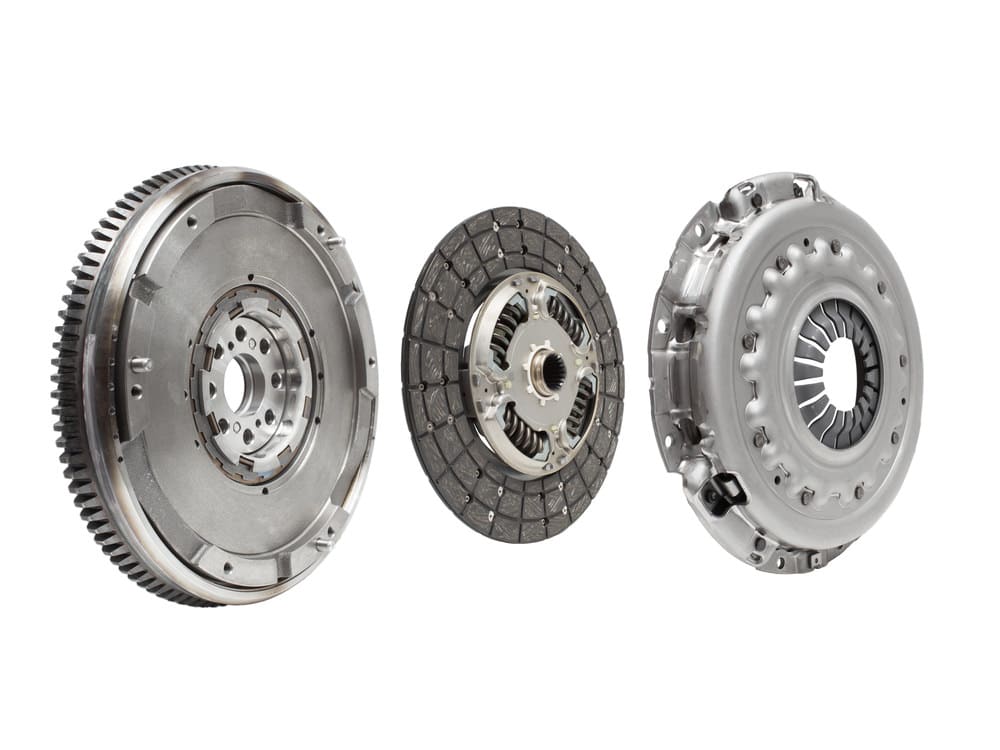

In your car transmission, the clutch is a device that works to engage and disengage the moving parts of your drive shaft. For purposes of this discussion, we’ll focus on manual transmissions.
The moving parts are the transmission input shaft and the engine crankshaft. The engine rotates at different speeds, and the automobile transmission’s gears need to be shifted. When you’re shifting your car, the power of the engine is delivered to the wheels. That, in a nutshell, is how your transmission works.
The clutch
The clutch assembly contains a number of small parts, but the main components are:
Flywheel: This is connected to the crankshaft and spins with the motion of the engine.
Pressure plate: This is bolted to the flywheel. It’s spring-loaded, so it holds the assembly together and also releases the tension that allows it to rotate freely.
Disc: The clutch disc is located between the pressure plate and the flywheel. It has friction surfaces, something like a brake pad, that makes and break contact with the flywheel and the pressure plate.
Throw-out bearing and release system: The throw-out bearing and the release system work together to engage and release the clutch.
The transmission’s input shaft runs through the middle of the pressure plate, flywheel and clutch disc, taking the engine’s power and sending it to the wheels by way of the gears. Where the shaft enters the transmission, there is a bearing that takes most of the shaft’s load. In the center of the flywheel is a smaller bearing that centers the shaft so it can rotate as the clutch assembly engages and disengages. This is what the clutch disc is connected to.
The clutch pedal
When your foot is off the clutch pedal, everything spins together. When you press the pedal in, the assembly disengages. As you let the pedal out, the friction surfaces on the disc comes into contact with the pressure plate and flywheel, and you’re moving. The idea is to match the engine speed to the point where the friction surfaces engage so that you don’t end up stalling the engine.
Now you know how your clutch works. Do you know how to drive a manual transmission? Maybe it’s second nature to you. If it’s not, why not learn? Just make sure you don’t ride the clutch and end up stalling!



